Thursday Feb 13, 2025
Thursday Feb 13, 2025
Saturday, 16 May 2015 01:21 - - {{hitsCtrl.values.hits}}
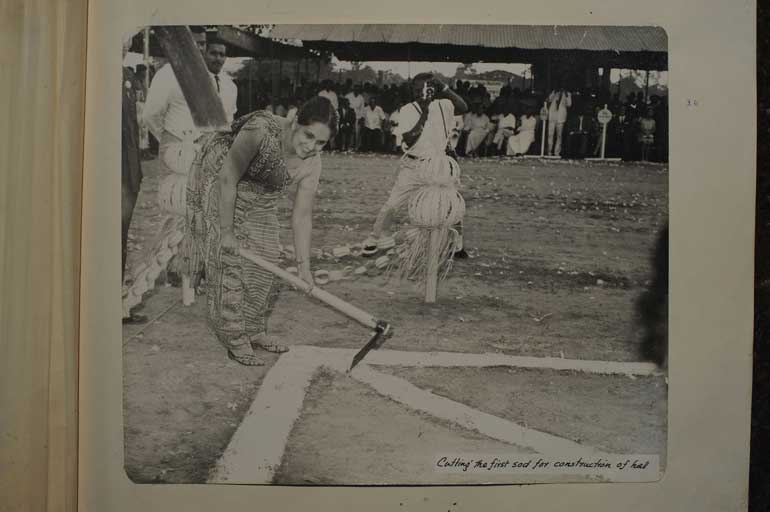
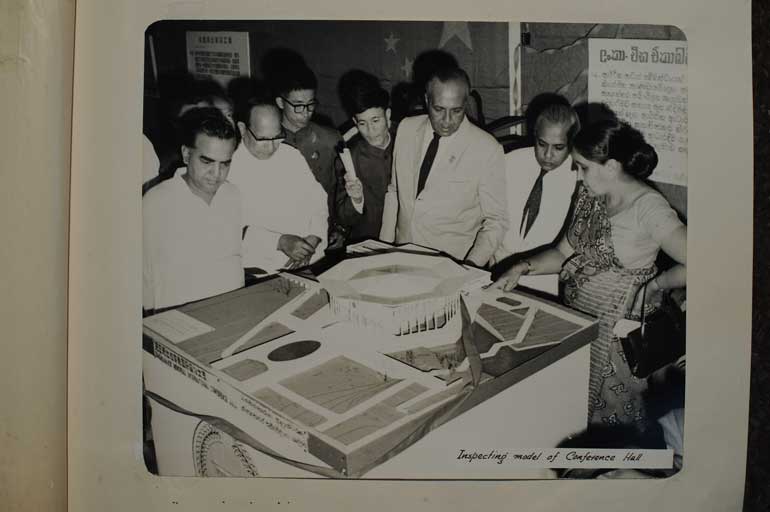
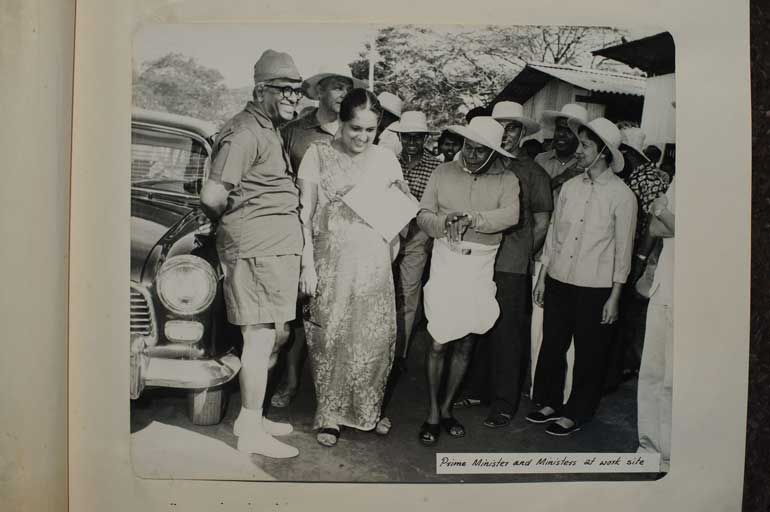
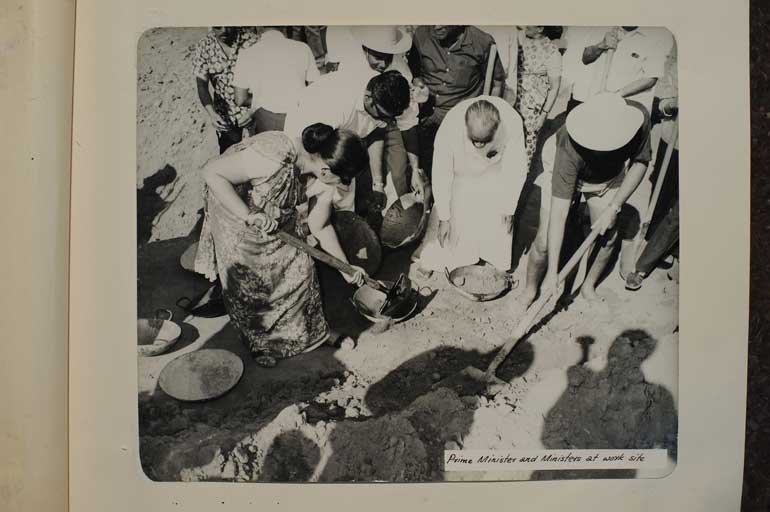
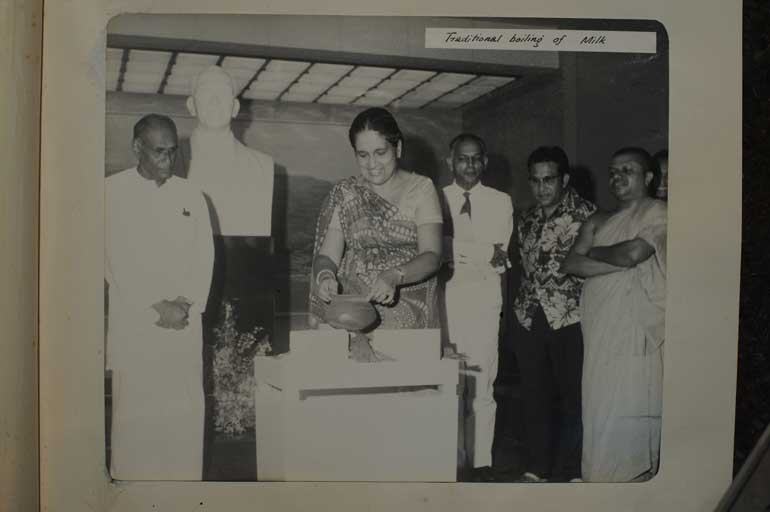
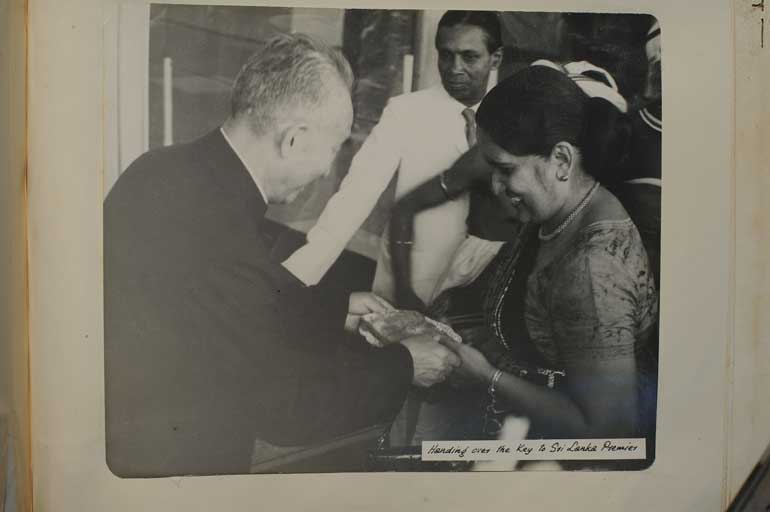
By D.C. Ranatunga
Exactly 42 years ago, on 17 May 1973, Prime Minister Sirimavo Bandaranaike accepted the Bandaranaike Memorial International Conference Hall (BMICH) donated by China as a tribute to the late Prime Minister S.W.R.D. Bandaranaike.
Governor-General William Gopallawa and the special envoy of Chinese Prime Minister Zhou Enlai (Chou-En-Lai), Xu Xiangqian (Hsui Hsiang-Chien), who came over to formally present the building, lit the oil lamp. The Prime Minister boiled a pot of milk. Traditions normally respected when moving into a new building were followed.
A statesman had been honoured.
Honouring S.W.R.D. Bandaranaike
During his lifetime Prime Minister Bandaranaike was well known as an ardent supporter and advocate of the ‘Panchasila’ – the Five Principles of Peaceful Co-existence. He firmly subscribed to the view that, despite divergent outlooks and different social systems, the nations of the world could live with each other, and that international disputes should be settled by mutual understanding and peaceful negotiations.
The decision of the Government of the People’s Republic of China to erect a memorial in his name would have been influenced by this commitment in addition to the close relationship that Bandaranaike established with China after he became Prime Minister in April 1956. In keeping with his foreign policy based on non-alignment, he established diplomatic relations with China on 23 February 1957.
A visit by the Chinese Prime Minister Zhou Enlai in January 1957, who participated in the ninth celebrations of Sri Lanka’s Independence, paved the way for the establishment of formal diplomatic relations.
Symbol of friendship
Cordial relationships continued between Sri Lanka and China after Sirimavo Bandaranaike became Prime Minister following the assassination of her husband in September 1959. During the visit of Premier Zhou Enlai and Vice Premier Song Qinling to Sri Lanka in February 1964, the two Governments agreed to build an international conference hall in memory of late Prime Minister symbolising the friendship between China and Sri Lanka.
The hall was to be an outright gift to the Government and people of Sri Lanka by the Government and people of the Republic of China. It was to be named the ‘Bandaranaike Memorial International Conference Hall’ (BMICH).
It took less than three years for the BMICH to be completed. The ground-breaking ceremony was held with the participation of Governor General William Gopallawa along with other dignitaries on 24 November 1970.
Cabinet Ministers and Members of Parliament led by Prime Minister Sirimavo Bandaranaike participated in a shramadana campaign during the early stages of construction as a gesture of goodwill and commitment.
The construction was done by a team of Chinese engineers, technicians and workmen along with their Sri Lankan counterparts in the Department of Buildings under the Ministry of Housing and Construction. The Minister was Pieter Keuneman of the Ceylon Communist Party – a Coalition partner in the Sirimavo Bandaranaike Government.
The Beijing Industrial Building Design designed the BMICH. An inspection team visited Sri Lanka and stayed for four months visiting the ancient cities to get an idea of the traditional architectural designs.
They also paid attention to learning about the country’s history, culture, customs and traditions. Their study convinced them of the great respect and veneration to Buddhism in the country. They were also inspired by the octagonal buildings, particularly the Sri Dalada Maligawa. Thus they decided to retain the octagonal design for the BMICH.
The building was completed four months ahead of schedule, saving a substantial amount from the estimated production costs. It comprised of the main hall and auxiliary buildings, and had four blocks.
‘Kurundu kele’ land
BMICH occupies a total land area of 13 hectares and its floor area is 32,540 square metres. It was once popularly known as a ‘kurundu kele’ – where cinnamon grew in abundance. The area later came to be known as ‘Kurundu watta’ and a municipal ward was carved out named Cinnamon Gardens and came to be identified as the poshest area in the capital city.
BMICH was the first purpose built conference centre in Asia and provided Colombo with an international conference hall, which the country lacked. It comprises the main conference hall, six committee rooms, a cinema and a banquet hall.
The long needle-like columns supporting the cantilevered roof as well as the internal walls and floors in the main entrance area are lined with marble with beautiful white, snow-white, sunset and red colours from north-east China and the Shantung province, stated a note released at the opening.
A white marble life size bust of Prime Minister Bandaranaike adorns the main entrance hall against the background of a mural oil painting depicting a panoramic view of the sunrise over Sri Pada and the hill country seen from the western coast of Sri Lanka.
The Conference Hall can accommodate a maximum of 1,600 delegates – 640 on the lower deck, 960 in the balcony. It has been designed to facilitate a maximum of 90 delegations or 540 delegates and 1,060 observers. Each delegation is provided with three chairs at the table and three behind.
The Hall is used regularly for local, regional and international conferences. The first global conference held at the BMICH after its ceremonial opening was the 20th Commonwealth Parliamentary Conference in August 1974. Among the noteworthy international conferences held at the BMICH are the fifth Non-Aligned Summit (1976) and two SAARC Conferences (1991 and 1998).
The stage can be used for a variety of purposes from accommodating the head table at a conference to convocations and conventions, and to drama, ballet and musical performances. There are facilities for simultaneous interpretation in seven languages and for public broadcasts.
The Banquet Hall can accommodate 600 persons and has become a popular place for dinners or cocktails and corporate luncheons.
The Eastern Wing with three floors houses the Committee Rooms with 90 office rooms meant for the use of delegates. There are three different assizes of Committee Rooms which are flexible for use by 100-350 persons.
At the completion of 40 years, the BMICH got a complete facelift, the expenses of which was borne by the Chinese Government. The refurbishment included the improvement of all the existing facilities plus the addition of new ones like accessibility for differently-abled with the addition of separate elevators and toiled facilities.
The BMICH is truly a symbol of friendship between two friendly nations.
Pix courtesy BMICH archives, re-photographed by Sarath Perera
Discover Kapruka, the leading online shopping platform in Sri Lanka, where you can conveniently send Gifts and Flowers to your loved ones for any event including Valentine ’s Day. Explore a wide range of popular Shopping Categories on Kapruka, including Toys, Groceries, Electronics, Birthday Cakes, Fruits, Chocolates, Flower Bouquets, Clothing, Watches, Lingerie, Gift Sets and Jewellery. Also if you’re interested in selling with Kapruka, Partner Central by Kapruka is the best solution to start with. Moreover, through Kapruka Global Shop, you can also enjoy the convenience of purchasing products from renowned platforms like Amazon and eBay and have them delivered to Sri Lanka.
Discover Kapruka, the leading online shopping platform in Sri Lanka, where you can conveniently send Gifts and Flowers to your loved ones for any event including Valentine ’s Day. Explore a wide range of popular Shopping Categories on Kapruka, including Toys, Groceries, Electronics, Birthday Cakes, Fruits, Chocolates, Flower Bouquets, Clothing, Watches, Lingerie, Gift Sets and Jewellery. Also if you’re interested in selling with Kapruka, Partner Central by Kapruka is the best solution to start with. Moreover, through Kapruka Global Shop, you can also enjoy the convenience of purchasing products from renowned platforms like Amazon and eBay and have them delivered to Sri Lanka.